The future is bright
With a vision to empower young people to reach their full potential, Let’s Talk Science is committed to preparing young people in Canada for future careers in a rapidly changing world. Founder and president Dr Bonnie Schmidt tells us about the charity’s 30-plus years of innovative STEM programmes.
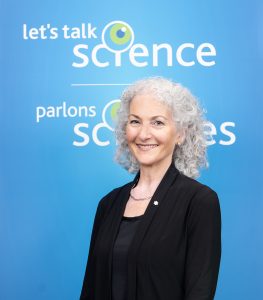 What did Let’s Talk Science set out to achieve when it was established in 1993?
What did Let’s Talk Science set out to achieve when it was established in 1993?
We hoped to inspire and motivate students to pursue science and learn more about research. Starting as a small outreach project to connect university STEM graduate student volunteers with local high schools, we quickly learnt that many early years and elementary school teachers lacked the training and confidence to do hands-on, inquiry-based activities. We soon evolved to support early years to grade 12 educators and students, bringing more hands-on programming to the classroom.
Let’s Talk Science’s vision has stood the test of time and remains the same – to empower young people to reach their full potential and prepare for future work demands by offering exciting and meaningful STEM programmes. We connect schools with the world of science, technology and innovation to spark curiosity and help develop essential skills. Our programmes are designed for both students and teachers. They highlight how relevant STEM is in everyday life and serve as a starting point for exploring careers. We want to highlight the wide range of opportunities that come with a background in STEM.
Why do you think there is a risk that Canadian youth are ‘switching off’ from STEM?
A lot of students lose interest in STEM classes, and there are several reasons for this. Firstly, many don’t see how these subjects matter in real life. Secondly, they often don’t have role models to look up to in these fields. Thirdly, students might not know about the interesting careers and paths they can take after high school if they stick with STEM. Plus, depending on how STEM classes are taught, they can seem ‘dry’. The pressure to get high grades for college or university admission can also make students shy away from what they think are tougher subjects. Unfortunately, not enough students realise that finishing high school with STEM credits offers a wealth of opportunities in college, university and later life. It’s important for us to highlight how essential STEM is in our daily lives, in jobs, and for tackling big issues like climate change, biodiversity loss, food security, infrastructure challenges and so much more.
Why is investing in STEM education so important for Canada’s future?
STEM is critical for solving some of the most significant issues we face today, like climate change, shifting to alternative energy, and ensuring everyone has access
to clean water, food and healthcare. Plus, STEM-based learning helps develop key skills like critical thinking, problem-solving and communication, crucial for understanding and sorting through all the misleading information we see online. We need people who are curious and ready to ask questions about the world around them. STEM education helps build those skills, making people more resilient and prepared to tackle whatever challenges come their way!
How does Let’s Talk Science empower young people?
The perspectives of teens and young adults inform our work, as does research by others into the key barriers to youth engagement. Conducting research to understand their vision for STEM is essential for empowering young people. These insights have helped develop our approach to career discovery and sustainability programming. For example, teens told us they want to learn about climate change in positive, action-oriented ways. As a result, our Clothing4Climate project does that; it culminates in youth-led projects such as clothing swaps. Our Living Space project engages youth in coding and has led to students working with school administration to improve schools’ heating and cooling systems. Travel4Climate builds systems thinking and helps teens develop recommendations to improve transportation-based climate impacts in their communities.
What collaborations make Let’s Talk Science’s work possible?
Let’s Talk Science is deeply grateful to our many partnerships that support the development and delivery of programmes. For example, more than 50 post-secondary sites are part of our outreach network, mobilising thousands of volunteers to deliver free, in-person programming across Canada. We collaborate with United for Literacy, First Nations Education Administrators Association and others to support Indigenous audiences. We also work with various organisations, including the Canadian Space Agency, Genome Canada, the Royal Society of Canada, Stem Cell Network, ArcticNet and the Perimeter Institute to bring leading-edge STEM programming to life. Thanks to investments by the Government of Canada, and many companies, foundations and individuals, all programming is available at no cost to participants.
What impact has the Let’s Talk Science Challenge had over the past 20 years?
Started by two of our volunteers in 2005, the Let’s Talk Science Challenge recently celebrated its 20th anniversary. The challenge is a team-based competition with a STEM knowledge component and a hands-on engineering design activity. Designed for students in grades 6 to 8, teams prepare for several months using a study guide. The challenge is now a hybrid activity incorporating virtual participation and culminating in an in-person competition in select locations.
The long-term impact of this programme is becoming evident as we hear from professionals and volunteers who participated in the challenge when they were in elementary school! Many have said that this competition opened the door to STEM for them – that it was fun and empowering and introduced them to other students who were having fun doing STEM. We have always seen the positive impact of the event on students in real time, but it’s especially exciting to see how that one programme has shaped so many lives.
What support does Let’s Talk Science offer educators?
We offer a robust suite of in-person and online programming for early years to grade 12 youth and educators. Available in English and French, everything is free to use, thanks to our supporters. Due to networks of outreach sites and teacher leaders, we also offer national programmes that are regionally responsive. In addition to programming for youth at every grade level, we offer a micro-credentialled professional learning programme for educators. Educators can join in-person sessions, webinars, self-paced modules, communities of practice and more. The All Programming page on our website is a great starting point to find all types of programmes and resources. When educators subscribe to our newsletter, Classroom Connection, they’ll get regular access to programming information in their inbox.
What resources do you provide for parents and carers?
For families, we offer a variety of learning experiences suitable for exploring STEM together in fun ways. Start a new adventure with our hands-on activities! We have a wide variety of STEM concepts with fun and interactive exercises requiring minimal materials. We also have a library of free eBooks to explore. Designed by educational experts with young learners in mind, our engaging eBooks foster critical thinking skills, creativity and a love for discovery.
What achievements are you most proud of?
Over the past 30+ years, Let’s Talk Science has positively impacted over 21 million people across Canada! We are particularly proud to hear stories from our post-secondary student volunteers who first encountered Let’s Talk Science as elementary students and have expressed that their experiences with us shaped their attitudes and encouraged them to pursue STEM pathways. Furthermore, our staff team is amazing; we share a deep commitment to helping youth prepare for a world that is increasingly complex.
What does the future hold for Let’s Talk Science?
The future is bright; our aspirational goal is to positively impact every youth in Canada each year. With an ongoing commitment to innovation, we recently released two new programmes. Mission : Innovation helps students in grades 7 to 10 develop innovation and entrepreneurial skills. Tomatosphere™ Adventure is our first Minecraft world, designed to engage grades 4 to 8 students in exploring where biology and space exploration come alive with two Canadian astronauts. Nurturing our partnerships is key to building a strong and prosperous Canada.
What does the future hold for STEM in Canada?
We are living in a time of transformation when STEM underpins almost everything. Generative artificial intelligence could be the most impactful technology of this era. People who are curious, resilient, ethical and interested in leveraging technology to tackle problems and improve lives can make significant impact. STEM education provides the tools to adapt to these changes and create a better future, and we think that’s very exciting!
Do you have a question for Bonnie?
Read about how STEM Fellowship is enabling young people to engage with real-world datasets:
www.futurumcareers.com/unlocking-young-peoples-potential-through-big-data

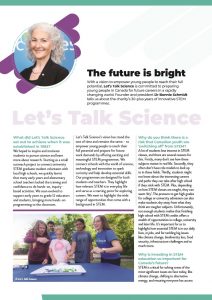
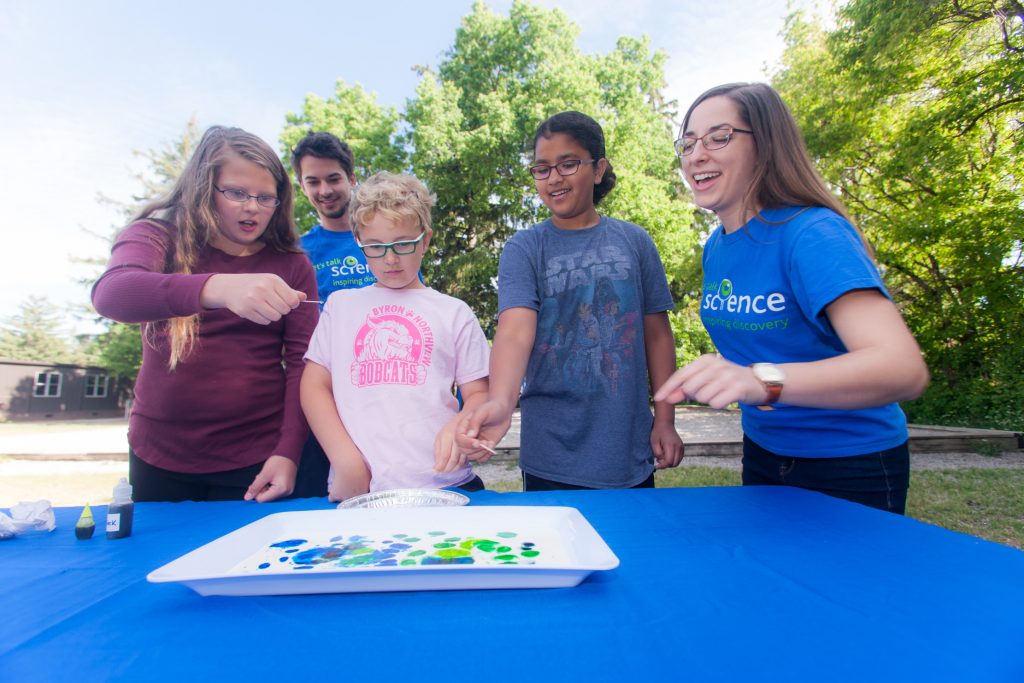
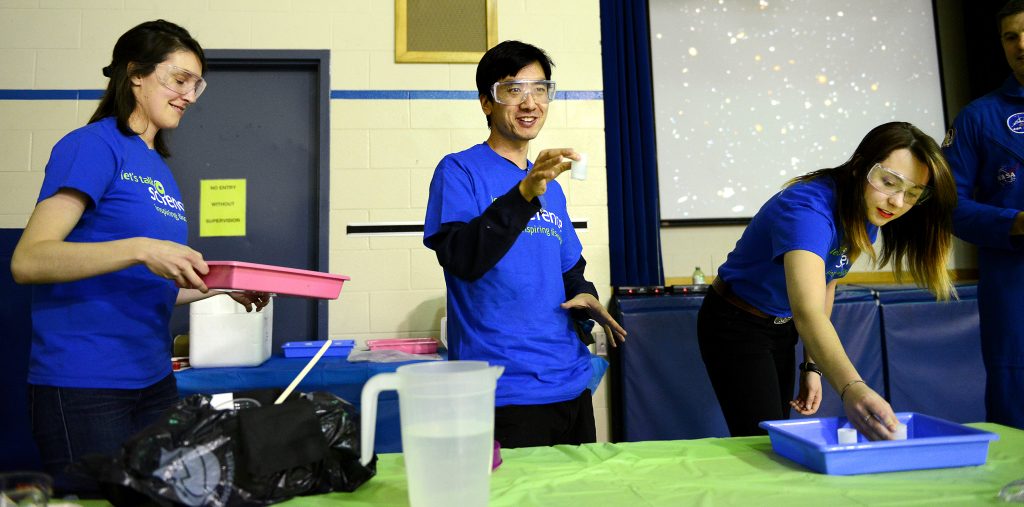
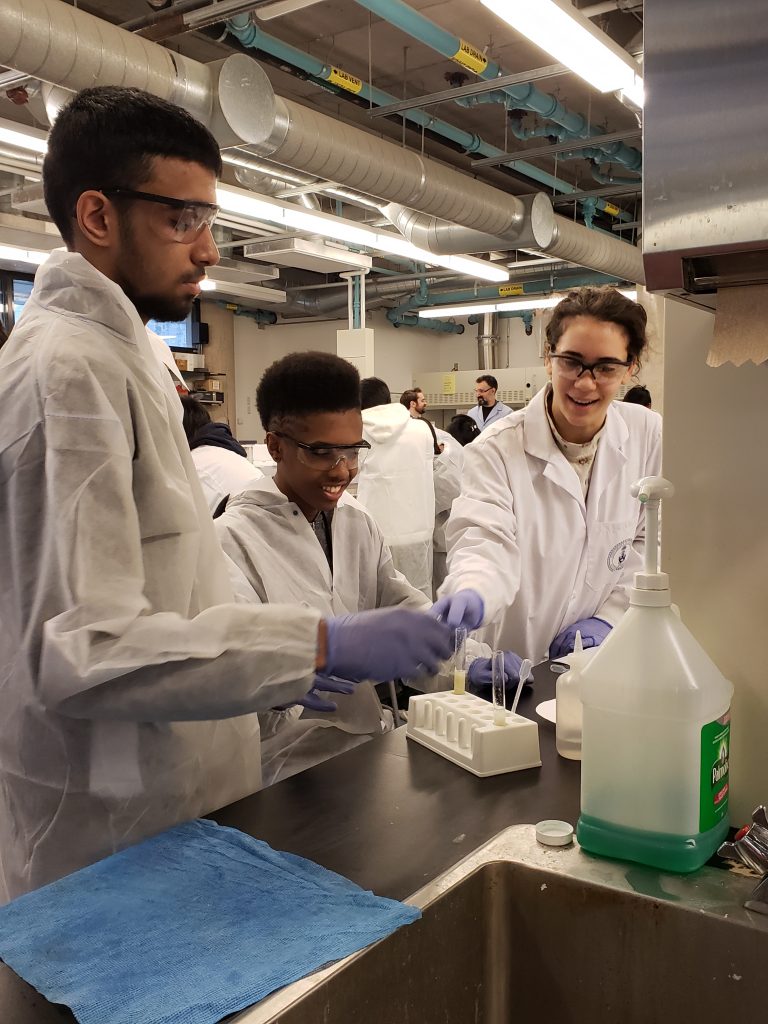
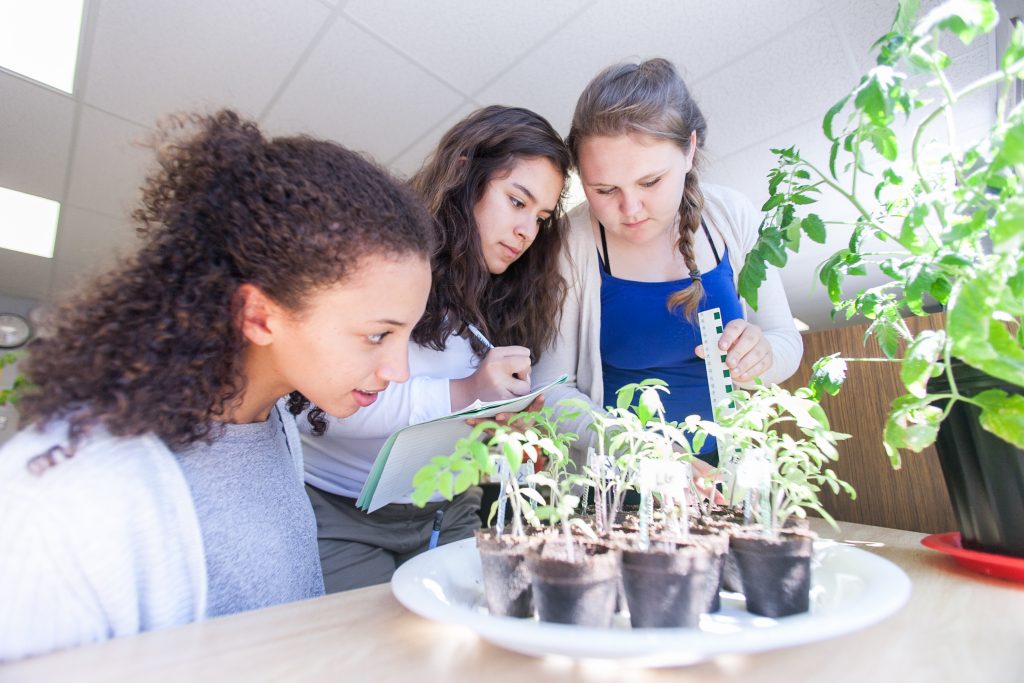
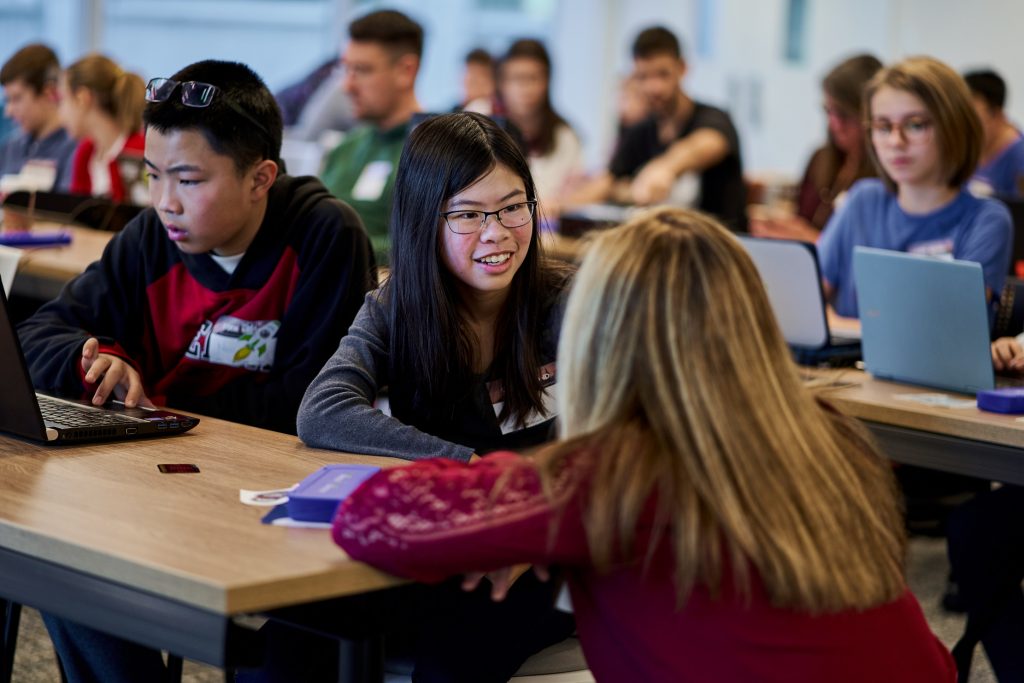
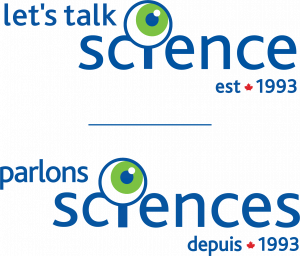


0 Comments